
views
Planting Lilacs

Choose lilac bushes to plant. Visit a nursery to pick out a variety of lilac to grow. In addition to color, pay attention to the full-grown height of the plant. Some plants, such as Palibin' and Superba lilacs, grow into 5 to 6 - foot bushes. Others, such as Syringa reticulata, become 20 to 30 - foot trees. You can purchase bare-root or container-grown plants from a local nursery or mail order plant supply company. Your local garden center or nursery should be able to recommend lilac varieties that do best in your area. You can also transplant saplings, runners from a friend or neighbor's lilac bush. Dig up and transplant saplings from a friend or neighbor's lilac bush in the spring, just as leaf buds begin to form or when the newly opened leaves are still small. Choose saplings that are at least 12 inches (30.5 cm) tall. Use a shovel to dig the saplings out of the ground with as much of a root base as possible. Cut the runners with the shovel blade to separate the sapling from the parent plant.
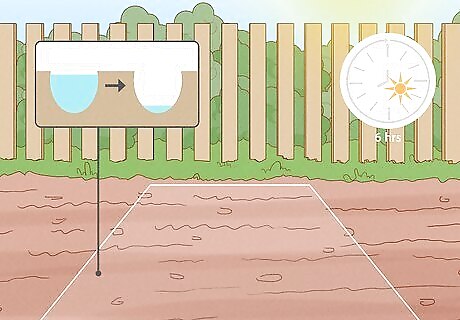
Choose a spot to plant the lilacs. Lilacs need full sun, so find a spot that receives at least 6 hours of sun each day and has good air circulation. Lilacs grown in damp stagnant air or without enough sunshine are prone to disease. Lilacs also need well-drained soil. If drainage is a problem, create a mound or raised bed for them before planting. Avoid planting lilacs too close to a wall or tree. The lilacs' roots need room to spread out.
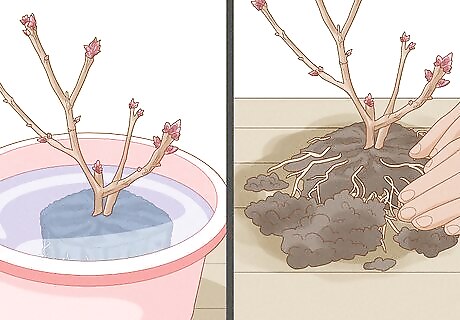
Get the lilacs ready for planting. If you are planting a dormant lilac, soak the roots in tepid water for 10–15 minutes. If they are rootbound or overgrown in their pots, loosen the root ball by using your fingers to gently separate the roots.
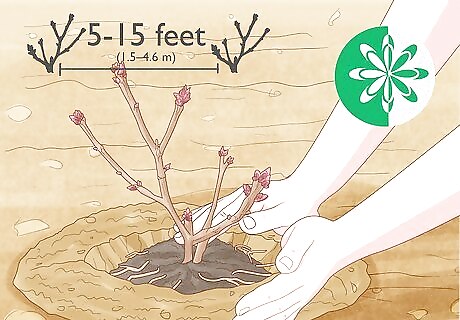
Plan to plant the lilac in the spring or fall. Dig a hole in the soil deep enough to bury the roots. The base of the plant should sit at ground level. After setting the lilac in the hole, fill it up halfway with soil, then water it before filling up the rest of the hole. Bring the soil level up even with the natural flare at the bottom of the base. Covering the base beyond this point could smother the roots and kill the plant. If the soil where you live isn't very rich, add some compost, bone meal, or fertilizer to the hole before planting the lilac. Use a soil testing kit to find out the pH of the soil. Lilacs prefer a neutral to slightly acidic pH of 5 to 7. If the soil is too acidic, sprinkle lime on the soil over the roots of the lilac. Follow manufacturer's application instructions and reapply every 3 to 5 years. If you're planting more than one lilac bush, space the holes you dig 5–15 feet (1.5–4.6 m) apart, depending on what variety you're planting.
Caring for Lilacs

Keep your lilacs watered. Water several times a week throughout the summer, except when your region gets heavy rain. Water deeply from the base of the plants and allow the ground to dry out before you water again.

Fertilize lilacs in the spring. Use compost or a balanced, all-purpose fertilizer each year in the spring. Depending on your soil conditions, you may want to fertilize them again when the flowers first begin to open.
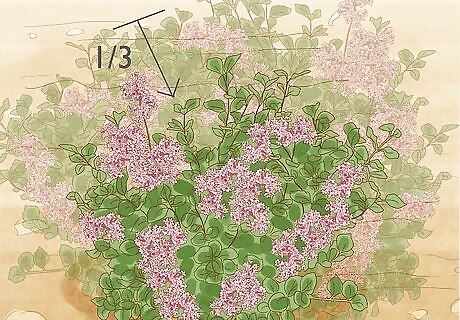
Prune lilacs regularly to increase flowering and air circulation. Cut off some of the oldest, largest branches as close to the ground as possible at the end of winter or after flowering in late spring. Take branches from different areas, including the center, to open the bush up where needed. Never remove more than 1/3 of the branches at any one time. Remove diseased or damaged branches and suckers sprouting up from the base as soon as you discover them. Cut off dead flowers to prevent the plant from putting resources into forming seeds. Prune the bush again in the fall after flowering is done to shape it or remove branches with low flower production.
Cutting and Drying Lilacs
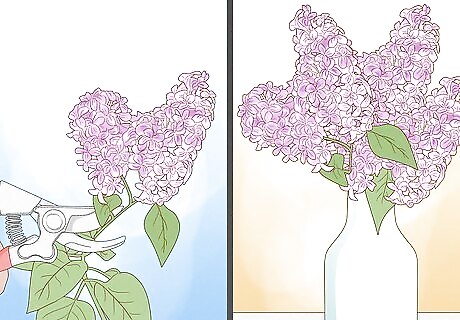
Cut lilacs when their blossoms are mature. Cut them right at their peak, when their color and scent are strongest. This will ensure they'll last as long as possible in your flower arrangement. Place them in a vase of clean water immediately.
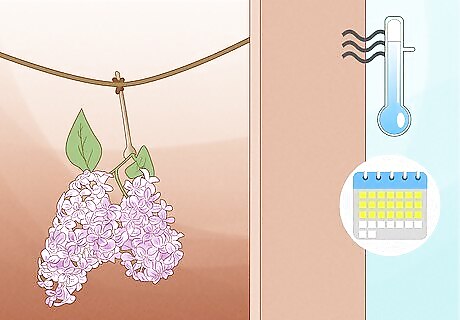
Dry lilacs hanging upside down. Gather a bunch of freshly harvested lilacs and bind their stems with a rubber band. Hang them upside down in a cool, dark place for 1 – 3 weeks. Gently remove the rubber band when the lilacs are completely dry. Dry lilacs using silica gel. Fill a large glass or plastic container with an inch of silica gel. Place a few stems of freshly harvested lilac into the container so that they stand up in the gel. Fill the rest of the container with gel so that it completely covers the lilac. Put a lid on the container and wait a week or so for the lilacs to dry. Remove them from the jar and use them in a flower arrangement.




















Comments
0 comment